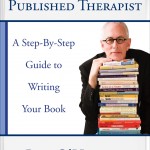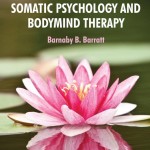
 A Review of Barnaby B. Barratt ’s
A Review of Barnaby B. Barratt ’s
The Emergence of Somatic Psychology and Bodymind Therapy
Christina Bader-Johansson, MSc
Barnaby Barratt’s Emergence of Somatic Psychology and Bodymind Therapy contains three sections: “Introducing a New Discipline” (5 chapters), “Sources: Ancient and Contemporary” (7 chapters), and “Current Challenges: Possible Futures” (5 chapters). Each chapter starts with a presentation of the themes discussed and theories presented, giving the reader a good overview before delving into the content. Barratt, collecting themes pertinent to the new discipline he calls “Somatic Psychology,” quotes many well-known body psychotherapists and unites aspects of history, philosophy, culture, neurobiology and energy medicine to grasp a broad conclusion for somatic psychology. Barratt’s book takes a wide stance on the theme of psyche and soma, giving an excellent overview of both Western and Eastern attitudes toward therapy. Underlying it all, he pleads for new considerations of what it means to be human and to heal human suffering. His book is also political when considering the implications it could have for really working with spiritual healing of the body. In that light, the values we hold today of high margins of profit and possessions are no longer possible to maintain. More and more disciplines of psychotherapy and psychology are realizing that philosophical, cultural and neurobiological evidence can bridge the eductionistic dichotomy between psyche and soma. Barratt argues that the disciplines are at a crossroads at the present, trying to get away from representations “in the head” about the body. He predicts that psychoanalysis will no longer be much in evidence and cognitive behaviourism no longer credible as a science, and that psychology will become somatic psychology and psychotherapy bodymind therapy.
Barratt defines somatic psychology as follows: “the psychology of the body, the discipline that focuses on our living experience of embodiment as human beings and that recognizes this experience as the foundation and origination of all experiential potential.” As for bodymind therapies, he encapsulates them as: “the healing practice that is grounded in the wisdom of the body and guided by the knowledge and the vision of somatic psychology” (p.21).
He gives an historical survey of the end of the 19th and 20th century as the time in which the male, Western, white, Christian, dominant power structure governs and manipulates the views about the other, considered to be nature, as well as women and people of the third world and people of color. Along these lines, the body is also treated as other to the mind. These polarizations had progressively been seen as the “natural order of things” (p. 25): civilized, indicative of modern values, and well accepted in the spheres of capitalism and globalization.
This has gradually changed as advances in the physical sciences, awarded Nobel prizes, tell about a universe of interdependency (quantum physics: theory of entanglement, relativity of time, particle-wave-duality, the uncertainty relation, correlations rather than causality), where the observed and the observer can no longer be seen as totally separate entities. Already foretold in the Vedic, Buddhist, Taoist and many indigenous teachings in which there are no dichotomies of subject/object, man/nature, or mind/body, nonduality has been confirmed by modern theories of nonlinear dynamic systems and complexity theories. Barratt also honors the Dalai Lama’s exile as a gift to the North American and European world which has further enabled dialogue about Western science and Buddhist thinking.
In this new-to-the-West line of thinking, the quality of a material event is determined before the matter comes into existence. Intention comes before action. This is the context in which the emergence of somatic psychology and bodymind therapies is to be articulated. Barratt gives some vignettes of therapeutic interaction to illustrate this. Ninety percent of what is known about the brain’s functioning has been discovered in the past decade. In the chapter on neuroscience Barratt briefly describes the polyvagal theory, mirror neurons, vascular communication and memory that is encoded in every cell, all of which certainly do their part in offsetting the Cartesian image of a cerebral mind that governs the bodily machine (p. 123). He makes the point that character change — which is invariably a complex and gradual process — involves the somatic expression of a person’s internal conflicts as much as it involves the verbalization of mental representations. Therefore, an approach to treatment that focuses solely on one of the aspects is doomed to be limited in its potential to heal (p.45). In some chapters he exhaustively continues the discourse around the zeitgeist shared by Freud, Rank, Reich, Ferenczi, Balint and others, and puts it in a modern, critical and constructive context, as exemplified by the thoughts of Gallagher in his book, How the Body Shapes the Mind (2005).
The significance of the emergence of somatic psychology is that it establishes, or re-establishes, human experience as the primary subject matter of any inquiry into the psyche and that it acknowledges the primacy of the embodied experience. Barrett mentions philosophers like Habermas, Husserl, Bergson and Merleau-Ponty and their influence on the increasing interest in bodymind therapies. Such diverse disciplines as anthropology, sociology, and cultural studies demonstrate how an increasing interest in the body indicates an important shift towards a broader understanding of the psychology of the body.
Instead of manipulating the body from the outside, Barratt sees healing as an inherently spiritual potential of the bodymind components. Healing the psyche is an ethical and spiritual process which presupposes safety, trust and intimacy. He describes some requisite factors for healing: a) the importance of honoring-by-listening to all aspects of the individual and his or her ecology, b) mobilizing energies by intentionally breathing and moving with awareness, and c) the appreciative connectivity of touching with awareness: touching in the sense of ethical, physical palpation and respectful, emotional engagement. Healing is not the avoidance of pain. Healing is not the avoidance of death. Healing is not a procedure of political or sociocultural adaptation. Healing is inherently a celebration of the liveliness of life itself!
Barratt describes some Western traditions of bodywork, such as osteopathy, chiropractic, massage, dance therapy, and free-form expressionist dance, which liberate the body and stimulate self-expression. He presents some principles or empirical laws that he finds widely applicable to many modalities of bodywork. These principles include:
– The body and the mind interact in and as one unit.
– The structure and function of the body are reciprocally interrelated, as well as the flow of subtle energies.
– The body possesses self-regulatory mechanisms.
– The movement of body fluids is essential to the maintenance of health.
– Movement reflects personality.
– Movement improvisation allows the patient to experiment with new ways of being.
– Dance movement therapy allows for the recapitulation of early destructive object relationships towards more constructive, less fearful iterations in a contemporary relationship.
Barratt then presents the influx of Asian healing disciplines with detailed descriptions of yoga, prana, chi, nadis, meridians, chakras and kundalini. He values the teachings of the Tibetan tradition in the diaspora after 1949 and in particular the work by D.T. Suzuki and his lectures at Columbia University. It is well known that Jung, Fromm, Watts and Merton were influenced by Suzuki, Barratt informs us. He concludes with a brief description of shamanic practices and transpersonal psychologies. In shamanic soul-travels, dissociated parts of our personality are emotionally contacted and brought back to the embodied being.
The Eastern religions all include yoga teachings as a pathway to spiritual growth and increased awareness. Currently, Western science is being challenged to acknowledge that our embodiment is not merely physical. It also has a “supra-physical” double in that there is an “astral body” or subtle energy body which yogic science has known about for millennia (p. 107).
Barratt has a deep knowledge of healthy sexuality and sexual therapy, which he presents in the chapter “The inherent Sexuality of Being Human”. He points out that very little has been done within the study of phenomenological sexuality and he criticizes modern books on body psychotherapy for completely avoiding the subject. Instead, sexuality is mentioned in its deteriorated forms, such as abuse, incest and other traumatizing experiences of sexuality. He describes the Western culture of embodiment in three alienated and optimized “products”: the media ideal, the medical ideal, and the economic ideal, all of which need to be critically discussed and deconstructed. He champions a bodily path to spiritual awakening which includes a playful, joyful experience of sexuality freed from social oppression.
In the chapter “Oppression and Momentum of Liberation”, Barratt discusses the issue of identity in a universe of non-linear dynamic interdependence. Indeed, nothing less than global cultural change is required for human beings to evolve on this planet, he argues. This is still a challenge to mainstream psychology and medicine. The question is in what way the discipline of somatic psychology could have a vital role in the elaboration of the psychology of liberation and thus contribute to radical political and economic transformation in the world. Are we aware of the immense impact we could have?
This book is a must for all body psychotherapists. Reviews of it so far have been outstanding, but the dense 234 pages of content admittedly are not easy to digest in one go. My suggestion is to read it in the form of a Scandinavian study circle, with one person presenting one chapter and the group reflecting and discussing it in depth, then another person presenting the next chapter and the group again reflecting.
I highly recommend this book!
BIOGRAPHIES
Barnaby B. Barratt PhD, DHS is a practicing psychoanalytic healer and teacher, internationally recognized for his contributions to psychodynamic philosophy, theory and practice, as well as for his work as a sexuality educator, sex therapist, somatic psychologist, and practitioner of Tantric meditation. In addition to his 35-year career as a psychotherapist, he has a distinguished history of teaching in higher education, teaching at such institutions as Harvard University, the University of Michigan, and Wayne State University. Currently practicing in South Africa, Dr. Barratt was most recently Provost (Chief Academic Officer) and Professor of Psychology at Northcentral University.
Dr. Barratt is the author of eight books: Psychic Reality and Psychoanalytic Knowing (1984), Psychoanalysis and the Postmodern Impulse (1993), The Way of the ‘BodyPrayerPath’ (2004), Sexual Health and Erotic Freedom (2005), Ten Keys to Successful Sexual Partnering (2005), What is Tantric Practice? (2006), Liberating Eros (2009), and The Emergence of Somatic Psychology and Bodymind Therapy (2010). Additionally, he has published over seventy professional and scientific articles, reviews and book chapters. He is currently working on a book about the nature of freedom. Email: BBBarratt@Earthlink.net
Christina Bader-Johansson, MSc, is a psychotherapist (ASP), body psychotherapist (EABP) and President of the Swiss National Association of the EABP (CH-EABP). She is the author of Movement and Interaction (Studentlitteratur 2012) which is currently only available in Swedish.
Email: bader.johansson@bluewin.ch
Holzel was hoping to see a noticeable difference in the brains of participants…
…did the brains of the MBSR group look different after their participation in the program? After just eight weeks of the mindfulness program, the MBSR group showed increases in gray matter in clusters of several regions of the brain – the left hippocampus, the posterior cingulate cortex (PCC), the temporo-parietal junction (TPJ) and the cerebellum.
Each of these areas is associated with a function that is known to be improved through mindfulness practices. For example, the hippocampus and cerebellum help to regulate emotion, and the TPJ is involved in social cognition.
Meanwhile, losing too much gray matter or damaging some of these areas can lead to psychopathology. But in areas like the hippocampus, volume loss is reversible – i.e., if mindfulness leads to an increase in gray matter in the hippocampus, there is a possibility that it could help with conditions such as depression or PTSD which are associated with reduced volume of the hippocampus.
Due to the design, there are some limitations to this study. Because a wait-list control design was used, we can’t say for sure that the content of the mindfulness exercises were what caused these changes in the brain. The effects could have resulted from other aspects of the program such as group social interaction, stress education, or stretching exercises. The hippocampus has been shown to be affected by exercise, and repeated activation of a brain region is also known to increase gray matter.
And another important thing to consider…
…the subjects in this study weren’t randomly assigned. They were a group of people who had enrolled in an MBSR course, and they were either physician- or self-referred to the program, in search of stress-reduction.
Despite these limitations, this research suggests that engaging in mindfulness meditation may be one way to change your brain structure to improve mental function.
To learn more about this study, you can find it in volume 91 of Psychiatry Research. Have you found mindfulness to be helpful to your patients?




 The idea that partners in committed relationships elicit strong reactions in each other is self evident. That these passions are often overlooked in the therapy room is equally a reality. In this ground-breaking book, you will discover an innovative system for helping couples discover all of who they are.
The idea that partners in committed relationships elicit strong reactions in each other is self evident. That these passions are often overlooked in the therapy room is equally a reality. In this ground-breaking book, you will discover an innovative system for helping couples discover all of who they are.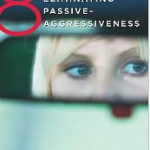
 Brandt, A. (2013). 8 Keys to Eliminating Passive-Aggressiveness. New York: W.W. Norton & Company, Inc. 184 pages. ISBN: 9780393708462
Brandt, A. (2013). 8 Keys to Eliminating Passive-Aggressiveness. New York: W.W. Norton & Company, Inc. 184 pages. ISBN: 9780393708462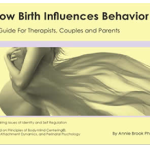
 Annie Brook’s Books
Annie Brook’s Books


 Davidson, N. (2013). The Secrets of Lost Cats. New York: St. Martin’s Press. 264 pages. ISBN: 9781250006264
Davidson, N. (2013). The Secrets of Lost Cats. New York: St. Martin’s Press. 264 pages. ISBN: 9781250006264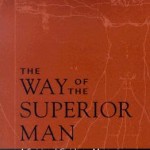
 Deida, D. (1997). The Way of the Superior Man: A Spiritual Guide to Mastering the Challenges of Women, Work, and Sexual Desire. Boulder, CO: Sounds True, Inc. ISBN: 978-1-59179-257-4. 195 pages.
Deida, D. (1997). The Way of the Superior Man: A Spiritual Guide to Mastering the Challenges of Women, Work, and Sexual Desire. Boulder, CO: Sounds True, Inc. ISBN: 978-1-59179-257-4. 195 pages. feminine essence is the desire for love and romance above all else. Usually men have a more masculine essence and women have a more feminine one, but that is not always the case. A relationship where the essences balance out would be considered the most successful because the couple is complementing one another and allowing room to grow.
feminine essence is the desire for love and romance above all else. Usually men have a more masculine essence and women have a more feminine one, but that is not always the case. A relationship where the essences balance out would be considered the most successful because the couple is complementing one another and allowing room to grow.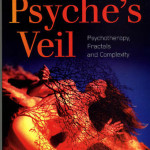

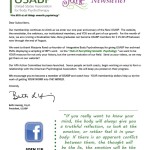


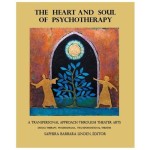
 Linden, S. B. (Ed.). (2013). The Heart and Soul of Psychotherapy: A Transpersonal Approach through Theater Arts. USA: Trafford Publishing. 511 pages. ISBN: 978-1-4669-7335-0.
Linden, S. B. (Ed.). (2013). The Heart and Soul of Psychotherapy: A Transpersonal Approach through Theater Arts. USA: Trafford Publishing. 511 pages. ISBN: 978-1-4669-7335-0. Somatic Perspectives on Psychotherapy
Somatic Perspectives on Psychotherapy






